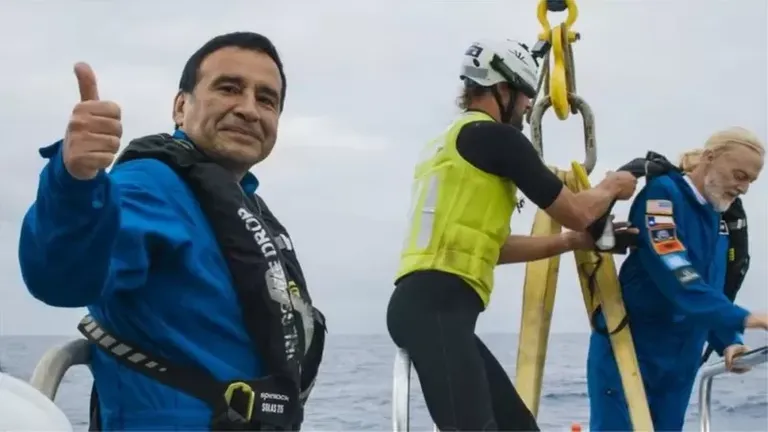For years, Chilean naval scientists Osvaldo Oloa and Robin Escribano have wondered what it would be like to have a view of the Atacama Trench (deep ravine) between Chile and Peru.
The Atacama Trench is a deep ravine in the ocean that is more than 8,000 meters deep and so far no human has had direct access to it.
Oloa and Escribano have been the director and deputy director of the Millennium Institute of Oceanography at the University of Concept in Chile, respectively. He had resigned from his post to study the surface of the trench.
Together with his team, he mapped the geographical location of the deep sea for the first time, and in 2018, during an expedition, he took some pictures and videos of the place and collected water samples and water in its bottom. Obtained DNA samples of strange creatures living inside.
He says that until then, going so deep was not part of his study because going into that depth and seeing what was needed was technically no less than going to the moon.
However, the two scientists landed in the trench last week with the American expedition Joe Victor Veskovo. It should be noted that the American expedition that Victor became the first person to visit the five deepest places of the five seas in the year 2019. They used a specially designed submarine to dive into the world's deepest seabed.
Thus Oluwa, Eskribano and Veskovo became the first people to descend into the ditch.
He made two in-depth trips. Each of the two tours lasted a total of ten hours, and they made all the preparations for it, including getting out of the body the night before going into the water, wearing warm clothes.
During two separate voyages, first Olua and then Eskribano traveled this trench with Vascovo. They used a small oval-shaped titanium submarine made by Florida's Triton Submarines Company. It was covered with a protective layer of synthetic foam.
Based on the legendary novels of Ian Banks, the submarine was named 'Limiting Factor' which would not be out of place if called a technical miracle and it would open its doors from time to time for discovery and research in the so-called headal zone of the oceans as usual. Has been It should be noted that the area after 6,000 meters in the sea is called the head zone.
